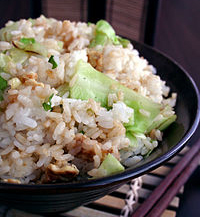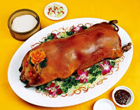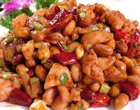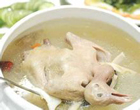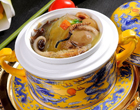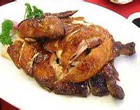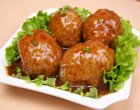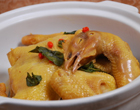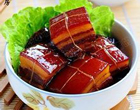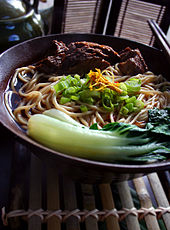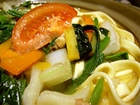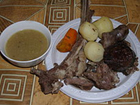
Chinese cuisine includes styles originating from the diverse regions of China, plus styles of Chinese people in other parts of the world.
Introduction
| The history of Chinese cuisine in China stretches back for thousands of years and has changed from period to period and in each region according to climate, imperial fashions, and local preferences. Over time, techniques and ingredients from the cuisines of other cultures were integrated into the cuisine of the Chinese peoples due both to imperial expansion. Styles and tastes also varied by class, region, and ethnic background. This led to an unparallelled range of ingredients, techniques, dishes and eating styles in what could be called Chinese food, leading Chinese to pride themselves on eating a wide variety of foods while remaining true to the spirit and traditions of Chinese food culture. |
-------------------------------------------------------------------------------------------------------------------------------------------------------------------------
Regional cuisines
The so-called Eight Culinary Traditions of China are Anhui, Cantonese, Fujian, Hunan, Jiangsu, Shandong, Szechuan, and Zhejiang cuisines.
| Cantonese style is the charm dishes, which enjoy a long history and a good reputation both at home and abroad. It is common with other parts of the diet and cuisine in Chinese food culture. |
| It originates in the Sichuan Province China famed for bold flavors, particularly the pungency and spiciness resulting from use of garlic and chili peppers, as well as the Sichuan peppercorn and Facing heaven pepper. | ||
|
| ||||
| Anhui cuisine is similar to Jiangsu cuisine, but with less emphasis on seafood and more on a wide variety of local herbs and vegetables. Anhui province is endowed with fresh bamboo and mushroom . |
| Fujian cuisine is often served in a broth or soup, with cooking techniques including braising, stewing, steaming and boiling.Woodland delicacies such as edible mushrooms and bamboo shoots are also utilized. | ||
|
| ||||
| Shandong Cuisine is featured by a variety of cooking techniques and seafood. The typical dishes on local menu are braised abalone, braised trepang, sweet and sour carp, and Dezhou Chicken. |
| It is one of the major components of Chinese cuisine, which consists of the styles of Yangzhou, Nanjing, Suzhou and Zhenjiang dishes. It is very famous all over the world for its distinctive style and taste. | ||
|
| ||||
| Hunan cuisine is well known for its hot spicy flavor, fresh aroma and deep color. Common cooking techniques include stewing, frying, pot-roasting, braising, and smoking. |
| Zhejiang cuisine derives from the native cooking styles of the Zhejiang region. The dishes are not greasy, having but instead a fresh, soft flavor with a mellow fragrance. | ||
|
|
A number of different styles contribute to Chinese cuisine
| However, perhaps the best known and most influential are Cantonese cuisine, Shandong cuisine, Jiangsu cuisine (specifically Huaiyang cuisine) and Szechuan cuisine. These styles are distinctive from one another due to factors such as available resources, climate, geography, history, cooking techniques and lifestyle. One style may favour the use of lots of garlic and shallots over lots of chilli and spices, while another may favour preparing seafood over other meats and fowl. Jiangsu cuisine favours cooking techniques such as braising and stewing, while Sichuan cuisine employs baking, just to name a few.Hairy crab is a highly sought after local delicacy in Shanghai, as it can be found in lakes within the region. Peking Duck is another popular dish well known outside of China. | |
Besides the various Han cuisines, the other 55 ethnic groups each have their own. With their peculiar religions and geographical zones, their diets differ respectively and are full of interest.
| It is traditionally served with bamboo chopsticks, in contrast to other Himalayan cuisines, which are eaten by hand. Small soup bowls are used, and the wealthier Tibetans ate from bowls of gold and silver. |
| It refers to the local culinary traditions of Mongolia dishes. The extreme continental climate has affected the traditional diet, so the Mongolian cuisine primarily consists of dairy products, meat, and animal fats. | ||
Cuisine can rise to many different occasions from luxury court feasts, fetes, holy sacrificial rites, joyous wedding ceremonies to simple daily meals and snacks. The art of a good cook is to provide a wholesome and satisfying dish to suit the occasion.
Written by Nicolas Yang
